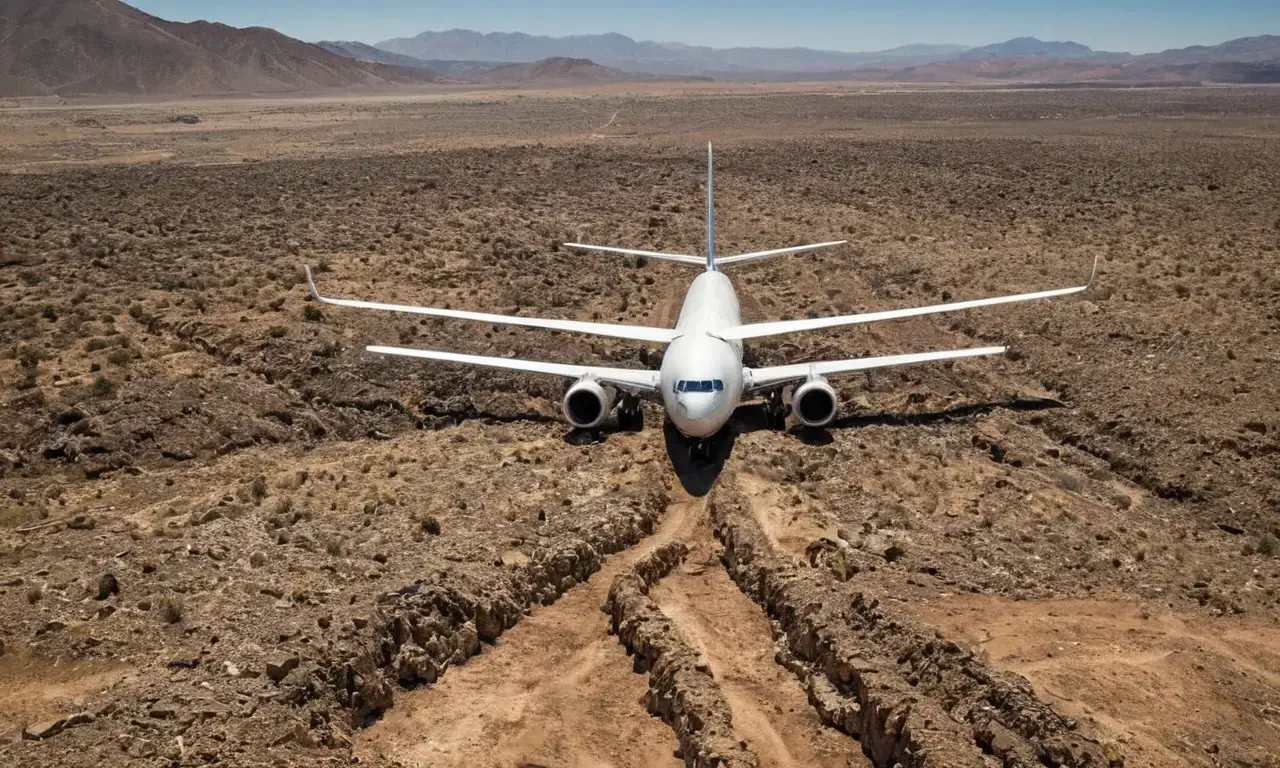
Earthquakes: Invisible to Planes, Yet Powerful on Earth

Earthquakes are natural phenomena that occur when tectonic plates shift and cause sudden releases of energy. These events can have devastating consequences for communities and infrastructure, but they also offer a fascinating glimpse into the dynamic forces shaping our planet. While we often associate earthquakes with shaking ground, their impact extends beyond the surface, creating waves of energy that travel through the Earth's interior and even reach space. However, these seismic waves pose a unique challenge when it comes to aircraft: can you feel an earthquake in a plane?
This article delves into the intricate relationship between earthquakes and airplanes, exploring how seismic waves interact with our atmosphere and why passengers on board are unlikely to experience their effects. We'll examine the fundamental causes of earthquakes, delve into the properties of seismic waves, and discuss the limitations of human perception and aircraft technology in detecting these vibrations. By understanding these factors, we can gain a deeper appreciation for the complex interplay between nature and our modern world.
What Causes Earthquakes?
Earthquakes are primarily caused by the movement of tectonic plates, massive slabs of rock that make up the Earth's lithosphere. These plates interact with each other in various ways, including colliding, pulling apart, or sliding past one another. This constant interaction creates stress and strain within the Earth's crust, eventually leading to a sudden release of energy in the form of seismic waves.
The most common type of earthquake is associated with plate boundaries. At these locations, where plates meet, friction builds up until it overcomes the rock's resistance. When this happens, rocks suddenly slip past each other, releasing energy that propagates outward from the epicenter as seismic waves. These waves can travel through the Earth's interior for long distances before reaching the surface, causing ground shaking and triggering secondary effects like tsunamis or landslides.
The magnitude of an earthquake is determined by its intensity, measured on the Richter scale. This scale quantifies the amount of energy released during an event, with higher magnitudes indicating greater power and potential damage. Earthquakes can occur in various geological settings, including subduction zones, where one plate dives beneath another, and divergent boundaries, where plates move apart.
Seismic Waves and Their Properties
Seismic waves are mechanical disturbances that travel through the Earth's interior and surface, carrying energy from the source of an earthquake. These waves come in different types, each with unique characteristics: P-waves (primary waves) and S-waves (secondary waves).
P-waves are compressional waves, meaning they cause particles in the medium to push against each other. They travel faster than S-waves, as they don't need to "jump" over obstacles like rocks or soil. This speed difference allows seismologists to locate earthquakes accurately by observing how P-waves propagate through different geological formations.
S-waves are shear waves, which cause particles to slide past each other horizontally. They travel slower than P-waves and can only penetrate certain types of materials, such as liquids or soft sediments. The interaction between these two wave types helps scientists understand the structure of the Earth's interior and its role in earthquake generation.
The energy released by an earthquake is not evenly distributed; it travels outward from the epicenter in a cone-shaped pattern known as the hypocenter. As this energy propagates, it creates seismic waves that can be felt on Earth's surface or detected using sensitive instruments like seismographs. These waves carry information about the earthquake's origin, magnitude, and depth, allowing scientists to study these events and improve disaster preparedness.
Infrasound and Its Detection Limitations
While earthquakes generate various types of waves, one category is particularly relevant to our discussion: infrasound. This refers to sound waves with frequencies below the human hearing range, typically below 20 Hertz (Hz). Infrasound can travel long distances through air and even penetrate solid materials like concrete or steel.
However, despite its ability to travel vast distances, infrasound is generally inaudible to humans. Our ears are designed to detect sounds within a specific frequency range, and infrasound falls outside this range. This limitation makes it difficult for us to perceive the effects of earthquakes on our surroundings.
Aircraft, however, can be equipped with sensitive instruments that detect infrasound waves. These instruments, often used in aviation research and weather monitoring, are capable of detecting extremely low-frequency sounds. While these instruments may not directly translate into a feeling of "earthquake," they can provide valuable data about the presence of seismic activity.
Aircraft Detection of Seismic Waves

While airplanes cannot feel earthquakes directly due to their high altitude and the lack of infrasound sensitivity in humans, they can detect seismic waves indirectly. These waves are often picked up by sensitive instruments on board aircraft, such as accelerometers and seismometers.
These instruments measure acceleration or vibration, providing a detailed record of any sudden changes in the plane's motion. This information can be used to identify potential earthquakes based on patterns of rapid acceleration or deceleration. Additionally, some aircraft are equipped with GPS systems that allow them to track their position relative to seismic activity. By combining this data with ground-based observations, researchers can gain a more comprehensive understanding of earthquake events and their impact on the surrounding environment.
Impact on Passengers During Flight
Despite the possibility of detecting seismic waves indirectly, passengers on board an aircraft are unlikely to experience any direct effects from earthquakes. This is because the distance between airplanes and the epicenter of an earthquake is often significant. Additionally, the speed at which seismic waves travel through air is much slower than their movement through solid ground.
As a result, the vibrations felt by passengers during flight are primarily caused by turbulence or engine noise. These factors can create a sensation of shaking or bouncing, but they are not directly linked to earthquakes. Therefore, while airplanes may be able to detect seismic activity indirectly, passengers are unlikely to feel any direct impact from these events.
Importance of Earthquake Monitoring
Monitoring earthquake activity is crucial for understanding the risks associated with these natural phenomena and developing effective mitigation strategies. By tracking seismic waves and analyzing their patterns, scientists can gain valuable insights into the behavior of tectonic plates and predict potential hazards. This information helps communities prepare for earthquakes by implementing building codes, conducting drills, and educating residents about safety measures.
Furthermore, earthquake monitoring plays a vital role in disaster preparedness. Early warning systems, which use real-time data from seismic sensors to alert populations at risk, have proven effective in reducing casualties during major events. By investing in these technologies and strengthening our understanding of earthquakes, we can better protect ourselves and communities worldwide.
Conclusion
Earthquakes are powerful natural phenomena that continue to fascinate scientists and the public alike. While they may seem like a force of destruction, their impact on airplanes is limited due to factors such as altitude and the lack of infrasound sensitivity in humans. Despite this, aircraft can detect seismic waves indirectly through specialized instruments, providing valuable data for earthquake monitoring and disaster preparedness efforts.
Understanding these nuances helps us appreciate the complex interplay between nature and technology while acknowledging the importance of continued research and development in earthquake science. By investing in our knowledge and preparedness, we can better mitigate the risks associated with earthquakes and ensure a safer future for all.
Leave a Reply





Related Links